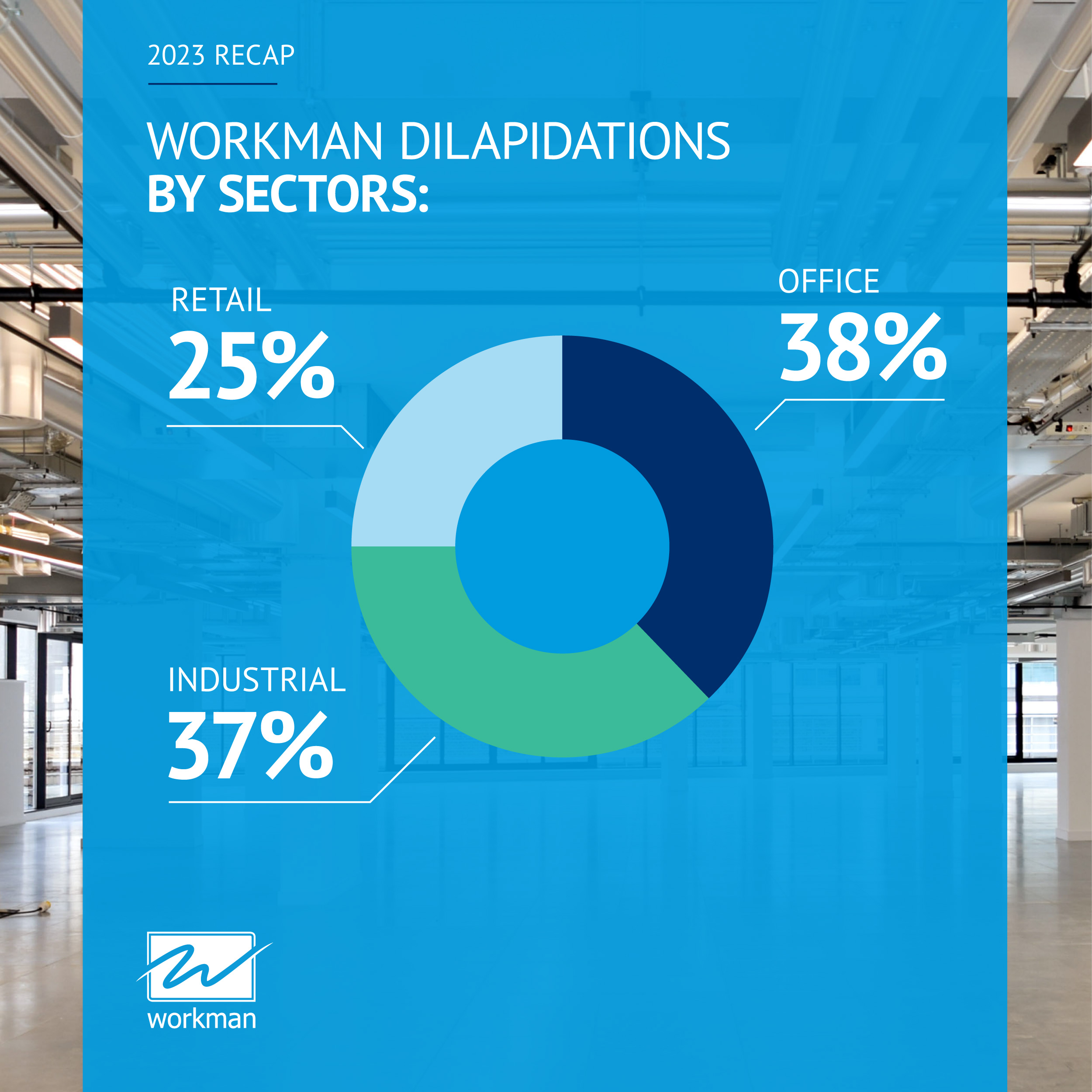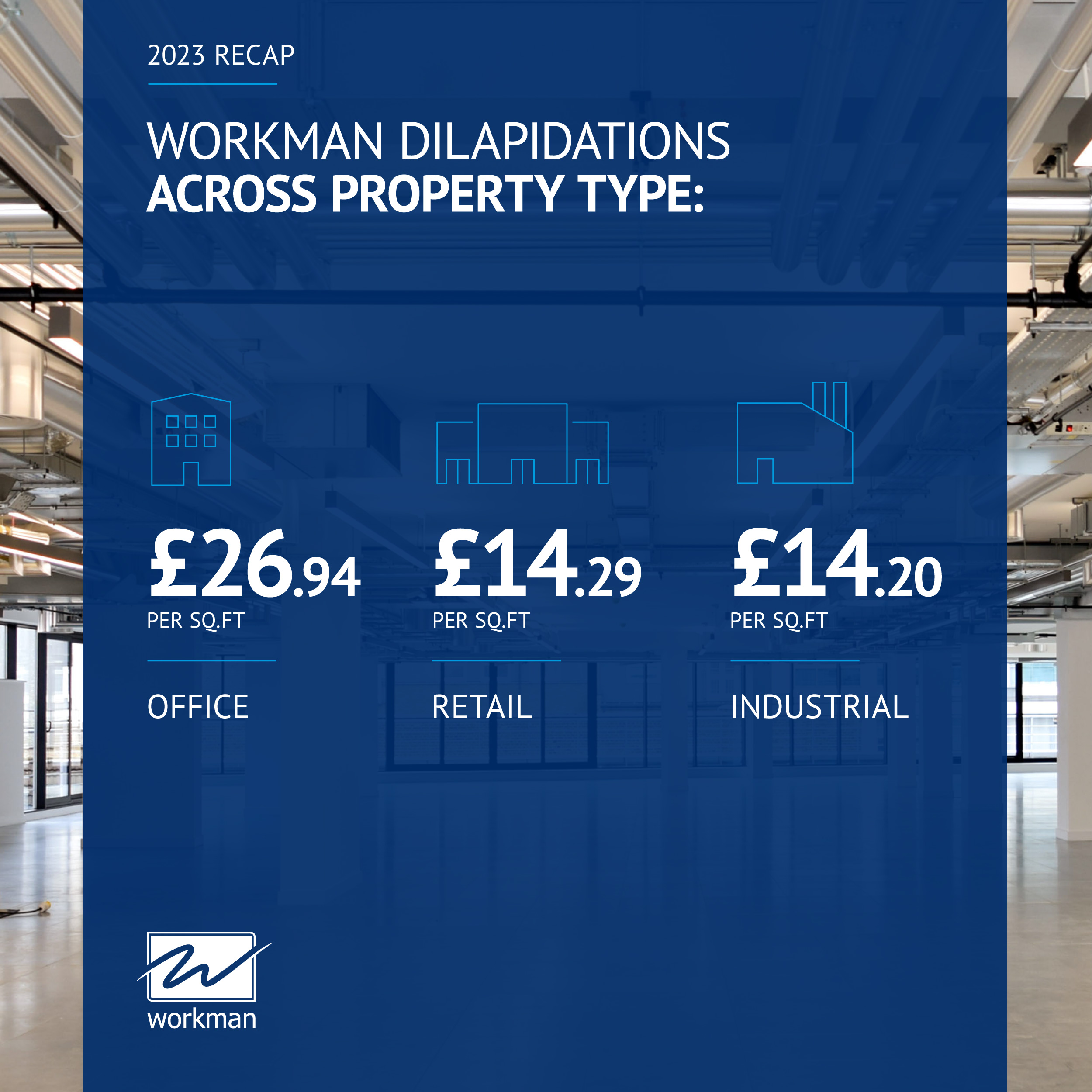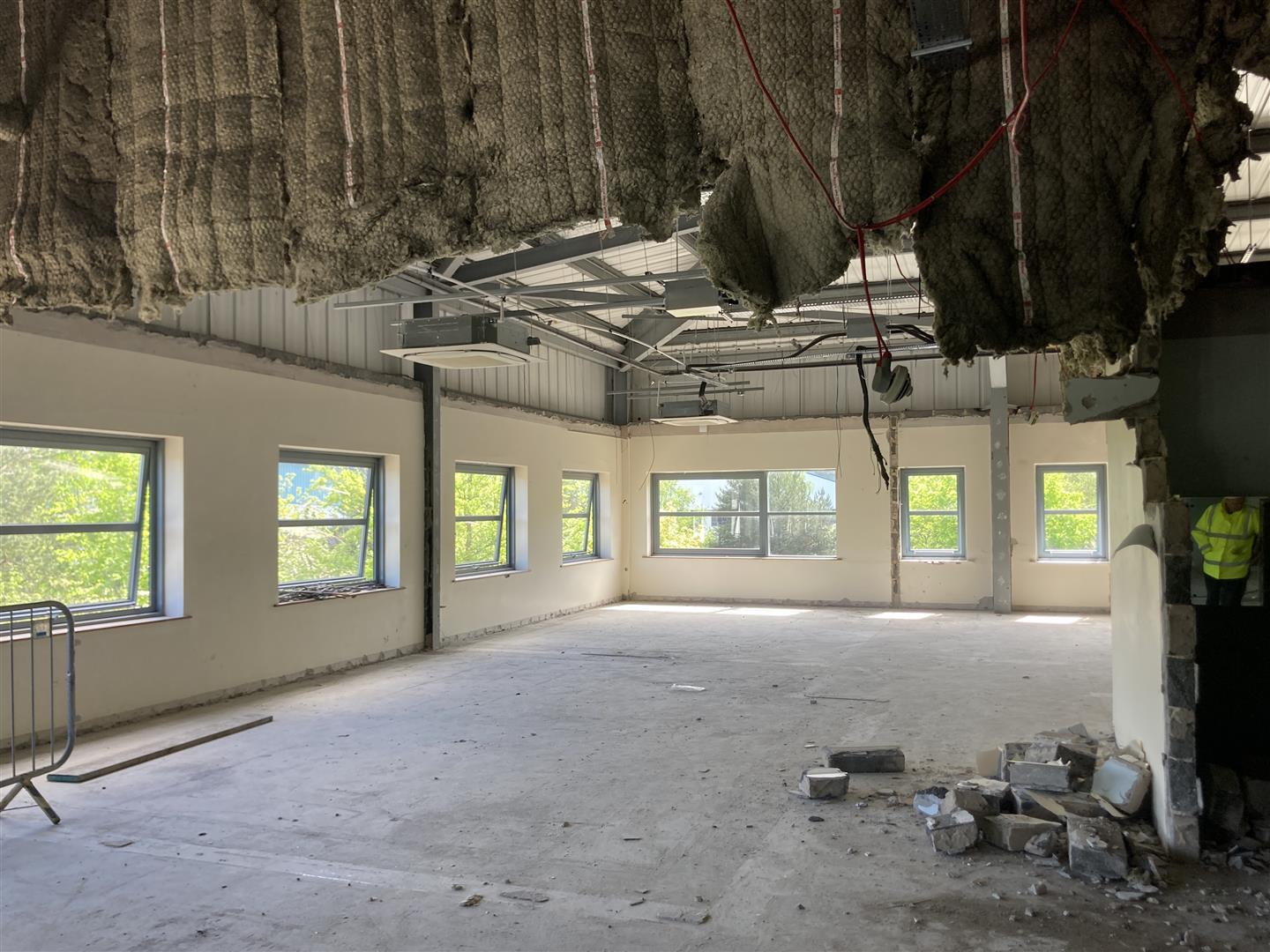Over the past year, our dedicated Workman dilapidations claims team has settled claims to the value of more than £20m, with 95% of fees recovered.
The average claim value recovered was £190,000.00.
During 2023, our dilapidations team has delivered instructions across real estate sectors including offices (38%), retail spaces (37%) and industrial properties (25%).
Broken down into square foot averages by sector, this stood at £26.94psf for offices, £14.29psf for industrial and £14.20psf for retail.
Often doing the work is the best way to demonstrate loss, and where clients have taken this route, our teams have seen settlements very close to the original claim value.
“The numbers of dilapidations always track very closely to the transaction market, and the past year has been no exception,” says Chris Wilkins, Partner and Head of Dilapidations at Workman.
“The office and industrial markets have cooled off, so too has the proportion of dilapidations. However, within retail, we have seen a backlog of claims due to the number of retailers facing trading difficulties.”
Confidence in the dilapidations process
There is a growing need, says Wilkins, for landlords to have a greater degree of confidence in the dilapidations process. The Workman dilapidations team, led by Wilkins, has recently streamlined its speculative tender service, which has served to make the process more efficient and effective for clients, for whom fees are often fully recoverable, even where a settlement has yet to be reached.
“Despite the stagnation of the market and the prevailing levels of economic uncertainty, I would urge landlords to take a leap of faith and proceed with dilapidations works, because doing the work to demonstrate loss will yield the best results,” says Wilkins. “If the landlord has undertaken valid required works and incurred the loss, providing the tenant is financially robust enough to cover the costs, then the claim is valid – regardless of whether the property is let or not.”
However, where clients abstain from undertaking the works and then proceed to sale, in most cases they not only lose the right to their dilapidations claim, they also risk losing out on the best potential sale price that could have been achieved for the property, had the works been carried out.
How does Workman successfully manage dilapidations?
An occupier leaving a property is a challenging time for a landlord. Not only are they faced with the prospect of no immediate rental income, but there are also void rates to consider, and potentially repurposing the building to suit a changing market.
It is always best to start with a business plan, so at Workman we begin by having a dialogue with the owner at the start of the process to understand their intentions and desired outcome. In this way, we ensure that our chance of recovery is higher, and the final outcome reflects the best position for the landlord.
Inflated construction costs, ESG considerations, and more demanding safety legislation, such as requirements brought in with the Fire Safety (England) Act 2022, remain a challenging mix of ingredients. However, with the foresight and expertise of the Workman dilapidations team, associated costs can be minimised by proactively completing forensic assessments and incorporating these into the dilapidations claim.
Understanding what the landlord wants, means we can create a focused schedule, which can reduce the time taken over dilapidations negotiations, meaning settlement can take place not only on time but also on budget.
For further information on the Workman dilapidations service, contact Chris Wilkins, Partner & Head of Dilapidations, Workman
Learn more here on dilapidations.










